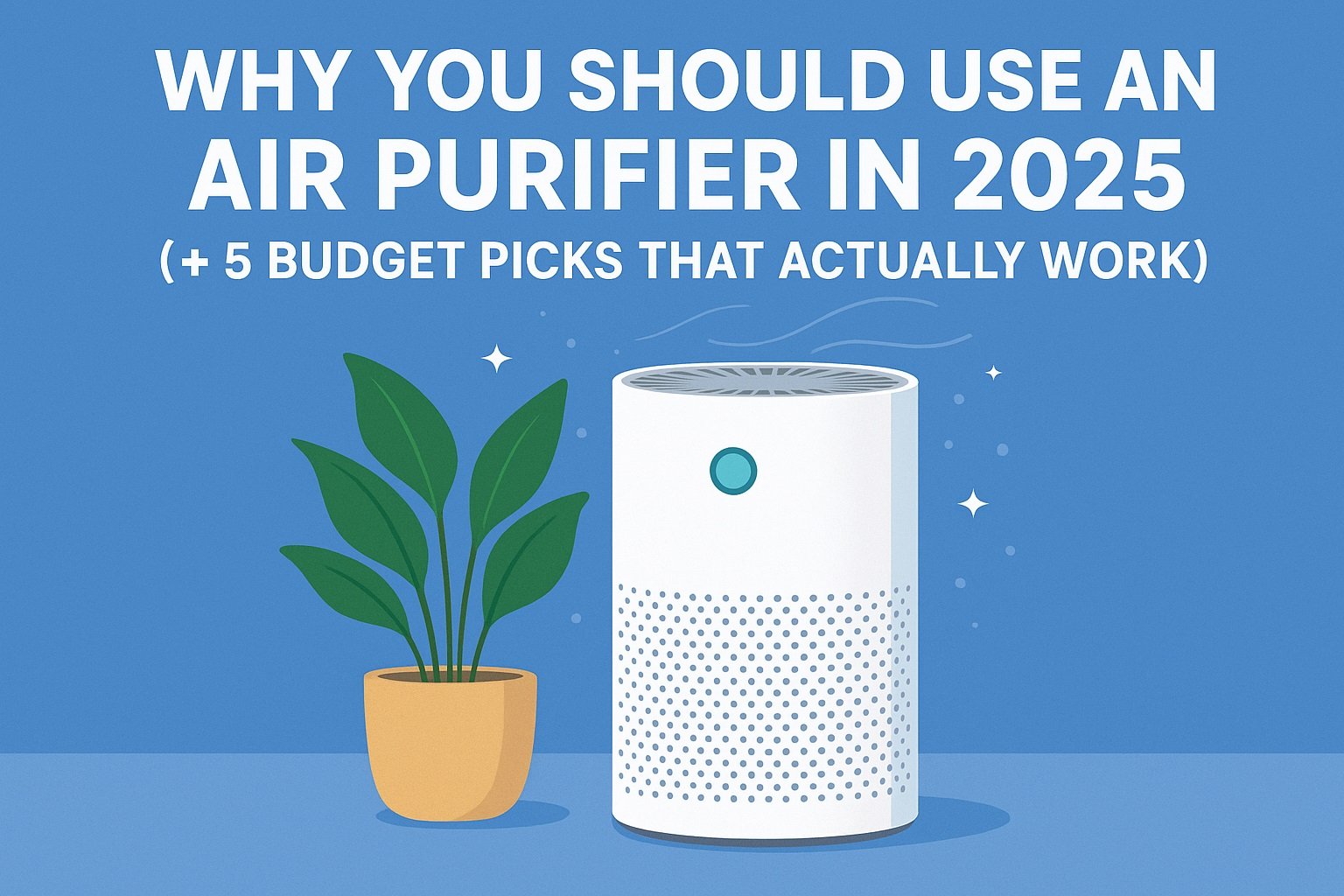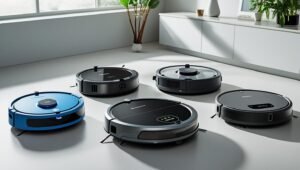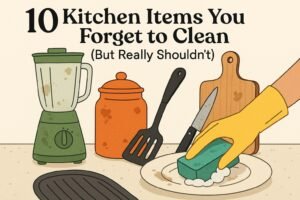Here is Why You Should Use an Air Purifier…
Indoor air quality has a huge impact on our comfort and health. We spend a lot of time at home, and without any filtration the air can accumulate dust, allergens, pet dander, and even pollutants from city smog or wildfire smoke. That’s why air purifiers have become must-have home gadgets. They continuously clean the air, making it easier for us to breathe and keeping our living spaces fresher. In fact, considering the growing concerns about pollen, dust, smoke, and other pollutants, everyone can benefit from an air purifier to improve indoor air quality according to businessinsider.com. By removing tiny particles from the air, purifiers provide noticeable relief for allergy and asthma sufferers and help eliminate unpleasant odors or haze from cooking or smoking.
If you’re wondering why use an air purifier at all, the benefits are clear. A quality purifier with a True HEPA filter can capture 99.97% of airborne particles down to 0.3 microns (about 250 times smaller than a grain of sand). This means it can trap common allergens like pollen, dust mites, mold spores, and pet dander – all major triggers for sneezing and asthma. We’ve personally found that running an air purifier overnight leads to easier breathing in the morning (no more stuffy nose or itchy eyes during allergy season). Even if you don’t have allergies, breathing cleaner air can improve overall wellness, as it reduces your exposure to indoor pollutants that might cause irritation or long-term health issues according to healthline.com. For pet owners, an air purifier can significantly cut down on floating fur, pet odors, and those invisible dander particles that trigger allergies. And if you live in a city or near a busy road, a purifier helps remove traffic pollutants and dust, giving you clean air sanctuary at home.
Who Should Use an Air Purifier?
Pretty much anyone who wants cleaner, healthier air at home will appreciate an air purifier – but they’re especially helpful for certain folks. Air purifiers are particularly useful for people with allergies or asthma, households with pets or smokers, individuals sensitive to odors or chemical fumes, and those living in areas with high pollution or wildfire smoke. For example, if you suffer from seasonal allergies or have a dust allergy, a purifier can filter out pollen and dust before you breathe them in, providing relief. Asthma sufferers often notice fewer triggers in a home with a good purifier running. Pet owners (like many of us!) rely on purifiers to capture pet hair and dander floating in the air, as well as to remove that “pet smell” – a HEPA + carbon filter combo works wonders on pet allergens and odors. If someone in your home smokes or you frequently deal with cooking smoke, an air purifier with an activated carbon filter will help absorb smoke particles and smells, making the air more pleasant.
City dwellers and those in smoggy or dusty environments are also prime candidates. Urban air pollution (think vehicle exhaust, industrial emissions) can seep indoors; a purifier keeps your home air quality higher by stripping out fine particulate matter. Similarly, during wildfire season or high-pollen days, a purifier provides a safe haven of clean air. Even if you don’t fit one of these categories, we all can benefit from breathing cleaner air – who doesn’t want fewer dust particles in the house and a fresher environment? In short, if you want to enhance your indoor air quality for better health and comfort, an air purifier is a simple and effective solution.
Top 5 Budget Air Purifiers 2025
Now that we’ve covered the why, let’s get into some affordable air purifiers that actually get the job done. Below are five of the best budget air purifier 2025 options – each one is a best-seller on both Amazon US and Amazon NL, meaning they’re tried-and-true globally. We’ve selected models across different price ranges (from cheap air purifiers for home use under ~$100, up to mid-range ~$200) so you can find the right fit for your needs and budget. These purifiers may be easy on the wallet, but we made sure they are also effective at cleaning the air (no useless gimmicks here!). For each pick, we list key features, pros, and who it’s ideal for. Let’s breathe easy and dive in:
1. Levoit Core 300 Air Purifier – Compact Powerhouse for Small Rooms
Levoit’s Core 300 is one of the best-selling affordable air purifiers worldwide, and for good reason. This compact cylinder-shaped purifier uses a 3-stage filtration system (pre-filter, True HEPA, and activated carbon filter) to remove dust, pollen, smoke, and odors from the air. It’s rated for small to medium rooms (up to about 20–40 m²), making it perfect for bedrooms, home offices, or kitchens. The Core 300 is simple to use – just plug it in, select a fan speed, and let it work. It even has a Night Mode that runs ultra-quiet (around ~24 dB, softer than a whisper) so it won’t disturb your sleep. While it doesn’t have smart features or fancy extras, it excels at its primary job: filtering particles efficiently in small spaces. In fact, this model has been around for years and has tons of happy customers backing it up (over 125,000 reviews on Amazon!) – a testament to its reliability and performance.
Pros:
- True HEPA filtration: Captures 99.97% of airborne allergens (dust, pollen, pet dander, mold spores) for noticeably cleaner air. Many users report immediate allergy relief after using the Core 300.
- Quiet and unobtrusive: Runs quietly, especially on Sleep Mode, and features a display light toggle – great for bedrooms. It’s also compact and modern-looking, so it blends into your home easily.
- Budget-friendly maintenance: Both the unit and its replacement filters are affordable. The filter lasts 6–8 months on average, and replacements are reasonably priced, keeping long-term costs low.
- Proven popularity: This model is a #1 best seller in its category with a trusted reputation for effectiveness. When something has that many positive reviews, you know it’s doing something right!
Ideal for: Anyone who needs an affordable air purifier for allergies or general air cleaning in a small space. If you have springtime pollen allergies, a dusty apartment, or a pet in a bedroom, the Levoit Core 300 is an excellent starter purifier. It’s also perfect for light sleepers thanks to its quiet operation. (Tip: There’s a “Core 300S” version with smart Wi-Fi/app controls as well, if you prefer being able to check air quality on your phone.)
Levoit Core 300 Air Purifier
- True HEPA filter captures 99.97% of particles
- Whisper-quiet operation (≈24 dB) great for bedrooms
- Compact & stylish — fits any room
- Reliable & proven with 125k+ positive reviews
2. Winix 5500-2 Air Purifier – Best Value for Smoke & Odors
Winix’s 5500-2 is often hailed as the best value air purifier in the mid-budget range, thanks to its blend of powerful filtration and reasonable price. This model can cover medium to large rooms (around 30–45 m² effectively) and packs some great features: a True HEPA filter, a washable advanced carbon filter (for odor and VOC removal), and PlasmaWave technology (Winix’s plasma ionizer feature that helps neutralize pollutants – and it can be turned off if desired). The 5500-2 also includes smart sensors and an Auto mode, so it will adjust fan speed based on real-time air quality – a nice set-and-forget convenience. In independent tests, the Winix performed as well as or better than some purifiers that cost 2–3× more, making it a standout choice for those on a budget. Notably, its high-quality granular carbon filter is uncommon at this price point and gives it an edge in removing smoke, pet smells, and cooking odors. It was even awarded “best for smoke” in a 2025 roundup of air purifiers, underscoring how well it tackles odors.
Pros:
- Excellent smoke & odor filtration: The Winix’s dedicated AOC carbon filter (made of activated carbon granules) effectively absorbs odors, smoke, and VOCs – great for kitchens, smokers, or anyone concerned about smells. Many budget purifiers skimp on carbon, but the 5500-2’s is robust (and washable for longer life).
- High CADR, large coverage: With a Clean Air Delivery Rate (CADR) often around ~230+ for smoke/dust/pollen, it can clean the air in a big living room or studio apartment quickly. It’s powerful yet still reasonably energy-efficient.
- Auto mode and sensors: The built-in air quality sensor kicks the unit into high gear if it detects pollutants (and shows a colored indicator light). This means the unit only works as hard as needed, and you get peace of mind that it’s responding to any pollution spikes – truly “set it and forget it.”
- Tested & award-winning: The 5500-2 won a “best value” award after outperforming pricier competitors in filtration tests. It’s well-reviewed online, with users praising how fresh it makes the air feel (many notice less dust settling around the house, too). Also, Winix is a trusted Korean brand with years of experience in air purification.
Ideal for: Those who need a budget air purifier that can handle tougher jobs like smoke, kitchen odors, or pet odors in medium-large spaces. If you cook frequently (and want to clear out food smells) or live with a smoker, this model is ideal. It’s also great for larger living rooms or open-plan areas. Essentially, the Winix 5500-2 is the go-to affordable choice for clean air in big spaces, without sacrificing performance – an awesome value for the price.
Winix 5500-2 Air Purifier
- Powerful carbon filter removes smoke & odors
- High CADR covers medium to large rooms
- Smart Auto mode with real-time sensors
- Awarded best-value performance for its price
3. Blueair Blue Pure 311 Auto – Quiet, Stylish & Energy-Efficient
Blueair is a Swedish brand known for slick designs and whisper-quiet operation, and their Blue Pure 311 Auto hits the sweet spot for affordable air purifiers in mid-sized rooms. It uses Blueair’s unique HEPASilent™ filtration technology, which combines mechanical HEPA filtration with electrostatic charging of particles to trap them more efficiently. The result is that it can deliver clean air with less noise and lower power usage – a big plus if you plan to run your purifier 24/7 (as many of us do). The Blue Pure 311 Auto is rated for rooms around 15–36 m². It features an Auto mode (hence the name) with a particle sensor, so it will adjust fan speeds based on the air quality. One thing we love about Blueair’s Blue Pure series is their minimalist design: a cylinder with a fabric pre-filter wrap that comes in different colors. You can literally dress up your air purifier to match your decor, or stick with the default gray/blue fabric. More importantly, these units are extremely quiet – ideal for bedrooms or offices where you need peace. Blueair’s trademark HEPASilent tech does work: independent tests have shown the Blue Pure models clean the air effectively while staying nearly silent.
Pros:
- Ultra-quiet operation: This purifier is so quiet that you might double-check it’s on! Even at higher fan speeds it produces a gentle sound (many describe it as a soft fan whoosh). The HEPASilent system cleans “the air without bringing sound pollution to your home” – perfect for light sleepers or in a workspace.
- Energy efficient: Because of the combined electrostatic filtration, the Blue Pure can move air effectively with lower fan speeds. It uses surprisingly low wattage (just single-digit watts on low settings), making it cheap to run 24 hours a day. It’s also Energy Star certified in most cases.
- Great for allergies: While quiet, it’s still very capable. Pet owners and allergy sufferers notice a big drop in dust, pet dander, and pollen in the air after using the Blue Pure. It’s designed to “do an excellent job of cleaning the air”, according to experts. The 360° intake and H13-grade filter capture pollutants from all sides.
- Simple and smart design: One-button control and an LED air quality indicator make it easy to use. The fabric pre-filter not only looks nice, but also catches large particles like hair and dust, extending the life of the main filter (you can vacuum or rinse the pre-filter). The unit itself is compact and modern – no bulky appliance vibe.
Ideal for: Bedrooms, nurseries, or home offices – anywhere you want clean air with no loud fan noise. It’s also great for people who appreciate aesthetics; the Blue Pure’s Scandinavian design and color options are a hit among those who want their air purifier to look as good as it makes the air feel. If you need an affordable air purifier that’s quiet enough to forget about, the Blueair Blue Pure series is a top choice. (For slightly smaller rooms or budgets, Blueair’s Blue Pure 411 model is a similar, even more compact unit with the same benefits.)
Blueair Blue Pure 311 Auto
- Ultra-quiet HEPASilent filtration
- Energy-efficient with low power usage
- Auto-mode & smart sensor adjust fan speed
- Sleek design with washable, colorful fabric pre-filter
4. Coway AP-1512HH “Mighty” Air Purifier – Best All-Around for Allergies
The Coway AP-1512HH – often just called the “Coway Mighty” – is a legend in the air purifier world. It has been rated a top pick by numerous consumer reports and experts for years, thanks to its superb air cleaning performance and reasonable price. Even in 2025, it’s hard to beat the Mighty in the mid-budget class. This unit is sized for medium to large rooms (up to ~50 m²) and uses a four-stage filtration: washable pre-filter, True HEPA filter, activated carbon filter, and an optional ionizer (Coway’s Ionizer can be turned on or off). One stand-out feature is its smart auto mode with air quality sensor – the Coway will automatically adjust fan speeds and even shut off (in “Eco mode”) when air is clean to save energy. In tests, the Mighty lives up to its name: it was the fastest at removing airborne dust, pollen, and other pollutants among every unit tested according to businessinsider.com, and even handles volatile organic compounds (VOCs) effectively. Reviewers consistently note that it reduces allergy symptoms and keeps dust levels down dramatically. Despite its powerful cleaning, the Coway is fairly quiet and very energy efficient (it’s Energy Star rated and famously doesn’t hog electricity). It’s no surprise this model was picked as “Best Overall Air Purifier” in at least one 2025 roundup and continues to be a top recommendation for allergy and asthma relief.
Pros:
- Outstanding filtration performance: The Coway Mighty scrubs the air quickly and thoroughly – in lab tests it removed particulate and chemical pollutants better than any other purifier in its class. It’s an excellent choice for allergy sufferers who need to remove triggers like pollen, pet dander, and dust mites from the environment.
- Energy-saving Eco mode: One unique feature – if the air stays clean for 30 minutes, the Coway will automatically shut the fan off to conserve energy, then periodically sample the air. This, plus generally low power use, gives it “the lowest energy consumption of all models tested.” You can run it continuously without fear of a big electric bill.
- Filter longevity and indicators: The HEPA filter lasts about a year (with 6-month carbon filter replacements recommended), and the unit has indicator lights to notify you when it’s time to change filters. No guesswork needed. Replacement filters are reasonably priced and the pre-filter is washable to extend life.
- Quiet and user-friendly: On low or medium speeds, the Coway is nearly whisper-quiet – great for night use. It has a handy air quality indicator (colored LED) and simple touch controls. It also looks sleek – a compact, minimalist design that won’t dominate your room.
Ideal for: Allergy and asthma sufferers, or anyone who wants the best overall air purification on a budget. The Coway Mighty is perfect for bedrooms, living rooms, or apartments where you need to cover a decent area. If you have multiple concerns (dust + odors + pollen + etc.), this purifier addresses them all, making it a versatile choice. Its track record of performance and reliability is hard to beat – truly the Mighty champion in this price range.
Coway AP-1512HH “Mighty”
- Four-stage purification delivers top-tier clean air
- Eco mode saves energy by pausing when air is clean
- Quiet yet powerful—ideal for all-day use
- Highly rated for allergy relief and reliability
5. Shark HP152 “NeverChange” Air Purifier – Low Maintenance, 5-Year Filter
If you’re tired of buying replacement filters every few months, Shark’s NeverChange Air Purifier offers a compelling solution: a HEPA filter that lasts up to five years. Yes, you read that right – five years between filter changes. The Shark HP152 (the “Max” model) is a large-room air purifier that covers about 120 m² (around 1300 sq ft) on its highest setting, so it’s ideal for open floor plans, big living rooms, or whole apartments. Its multi-layer H13 HEPA filter is protected by two pre-filter stages (a washable fabric pre-filter for big dust and pet hair, and a “Pet/Dander shield”) plus an activated carbon layer for odors. This design is how it achieves such a long filter life – the preliminary layers catch the gunk that would normally clog a HEPA filter. In terms of performance, the Shark is no slouch: it captures 99.98% of dust, dander, allergens and other particles according to the specs. It also includes “Clean Sense IQ,” which is Shark’s auto-sensing mode to adjust fan speed, and a real-time air quality display. Users (and reviewers) have been impressed – one tester noted it cleared stubborn cooking odors (like bacon smell) from their house in about an hour. The big selling point, of course, is that filter. Not having to replace filters for years can save a lot of money over time, making this pricier unit actually budget-friendly in the long run.
Pros:
- 5-Year HEPA Filter: The Shark’s filter is rated to last up to five years before needing replacement. This is a game-changer for maintenance – no more frequent purchases. It saves money annually and is super convenient (just vacuum/rinse the pre-filter monthly). Note: “NeverChange” is a bit of marketing – you will eventually change it (after ~5 years), but compared to the typical 6-12 month schedule, it’s fantastic.
- Great for large spaces: With the ability to cover ~600+ sq ft easily (and more for smaller ACH needs), this purifier is built for large rooms. If you have an open concept living/kitchen area or a small home, one Shark can likely cover it. It moves a lot of air on high setting, yet does so fairly quietly and efficiently.
- Odor elimination: The Shark’s multi-layer filter system and added carbon mesh do an excellent job on odors. Cooking smells, pet odors, even smoke are noticeably reduced. In testing, it handled kitchen smoke and even cigar smoke without leaving a trace. It also comes with an optional “odor neutralizer” cartridge to add a fresh scent, though you don’t have to use that.
- Modern features: A sleek digital display shows particle readings and color-coded air quality, so you always know how clean the air is. Auto mode ramps it up when pollution is detected and back down when air is clean. Despite its size, it has wheels (on some versions) or is easy to move room-to-room if needed. Build quality is solid, as you’d expect from Shark.
Ideal for: Anyone who wants low-maintenance, long-term air cleaning – if you dislike the hassle and cost of frequent filter changes, the Shark NeverChange is made for you. It’s also perfect for large rooms or whole apartments where smaller purifiers just can’t keep up. Families with pets or multiple occupants may appreciate the extra coverage and odor control (no more lingering cooking smell or pet funk). While it’s at the higher end of “budget,” the five-year filter means it could actually save money over time. Set it up in a central location and enjoy fresh air without constant upkeep.
Shark HP152 “NeverChange”
- HEPA filter lasts up to 5 years
- Cleans large rooms with touchless upkeep
- Excellent at removing odors & smoke
- Auto-sensing and real-time air-quality display
FAQ: Air Purifiers 2025 – Your Questions Answered
Q1. What kind of filter is best in 2025?
A: The gold standard in 2025 is still the True HEPA filter (High Efficiency Particulate Air filter). True HEPA filters – often labeled H13 or H14 in newer models – capture at least 99.97% of particles as small as 0.3 microns. This makes them extremely effective against common pollutants like dust, pollen, pet dander, mold spores, and smoke particles. In addition to HEPA, the best air purifiers now also include an activated carbon filter to adsorb odors, fumes, and volatile organic compounds (VOCs). So the ideal setup is a combo of HEPA (for particles) and carbon (for odors/gases). Some newer technologies have appeared – for example, UV-C lights (to kill germs), ionizers, or proprietary “hybrid” filters (like Blueair’s HEPASilent or Honeywell’s ifD filters) – but for most home users, a True HEPA purifier with a carbon filter is the top choice. It’s proven, safe, and highly effective. When shopping, just make sure it’s a “True HEPA” or H13+ filter (not just “HEPA-like”), and consider your needs: if odors or chemical sensitivities are a concern, ensure there’s a carbon layer. Bottom line: HEPA is still king for cleaning the air in 2025.
Q2. How often should I replace my air purifier filter?
A: It depends on the purifier and usage, but generally every 6 to 12 months for HEPA filters is recommended for most modelspeople.com. Many manufacturers suggest replacing the HEPA filter about once a year (some as often as every 6 months if the unit runs 24/7 or in very polluted conditions). Activated carbon filters may need replacing a bit more frequently, often around the 6-month mark, especially if they are thin or if you’re tackling a lot of odors/smoke. Pre-filters (if washable) can be cleaned monthly to help extend the life of the main filter. Always check your purifier’s manual – it will give a guideline, and many modern purifiers have a filter change indicator light that will alert you when it’s time. One thing we’re seeing in 2025 is longer-life filters in some models (for example, Shark’s 5-year filter, or certain brands with 2-year filters), but these are exceptions. Most purifiers need fresh filters yearly or sooner to work optimally. Pro tip: If you notice a drop in performance (e.g. dust buildup increases, or odors aren’t being removed as well) that’s a sign your filter might be saturated and ready for replacement.
Q3. Where should I place an air purifier in my home for best results?
A: Placement can make a big difference! The general rule is to put your air purifier in the room where you need the clean air the most, and in a spot where air can circulate freely. Don’t hide it in a corner or shove it against a wall – the intake needs space around it. Aim for at least a foot or two of clearance on all sides if possible. A great strategy is to target the source of pollutants: for example, if you want to remove smoke from cooking, place the purifier nearer the kitchen (but not so close that grease clogs it). If it’s for dust/pollen in the bedroom, put it relatively close to your bed (many people put one on a nightstand or the floor a few feet from the bed). In a living room, near the center of the room or near a doorway where air flows in can be effective. Also, avoid obstructions – don’t place the unit directly behind furniture or under a table, as that blocks airflow. Most purifiers pull air in from the sides or bottom and output clean air from the top or front, so they need that clearance. For multiple rooms, you may need multiple units, as walls and closed doors will limit air movement (one purifier can’t clean your entire house unless it’s an open layout). In summary: use it in the room you spend the most time in, give it breathing room, and keep it relatively central or near pollutant sources. Many of us move our portable purifiers from room to room during the day – living area by day, bedroom by night – which is a fine approach too.
Q4. Do air purifiers help with pet hair or smoke?
A: Yes, good air purifiers can significantly help with both pet hair and smoke – with some caveats. For pet hair, an air purifier will capture hair that is airborne. The HEPA filter and pre-filter are great at snagging pet fur and, more importantly, pet dander (the tiny skin flakes and dried saliva that trigger allergies). Many purifiers, like the Shark model above, even have specific pre-filters for pet hair. However, keep in mind pet hair tends to settle on the floor and furniture quickly due to weight, so you’ll still need to vacuum; an air purifier isn’t a replacement for regular cleaning of big clumps of fur. But it will reduce that “floating tumbleweed” effect of hair and keep the air clearer (and help with that doggy or kitty smell, especially if it has carbon for odors).
For smoke, air purifiers can be very effective at removing smoke particles and some odors. HEPA filters will trap the fine particulate matter in smoke (which is the part that causes haze and odor), and an activated carbon filter will absorb a lot of the smoky smell and chemical fumes. This makes purifiers great for scenarios like wildfire smoke intrusion, cooking mishaps, or even secondhand tobacco smoke – they can clear the visible smoke and much of the smell over time. However, no purifier can eliminate all smoke pollutants 100%. Some components of smoke (like very tiny gases or nicotine tar) are harder to remove completely. For heavy indoor smokers, an air purifier will help but not totally erase the health risks of smoke. And always choose a model with a substantial activated carbon filter for smoke; otherwise it will just spread odorless smoke particles. In short: for pet hair/dander and routine smoke issues (cooking, wildfire, occasional cigarette), a quality purifier is absolutely worth it – just pair it with good habits (vacuuming, ventilating when possible) for best results.
Q5. Are cheap air purifiers worth it?
A: It depends on what you mean by “cheap.” There are many budget-friendly purifiers that are quite effective – we’ve listed several above that are under $100-$150 and definitely worth it. These affordable air purifiers use true HEPA filters and have proven performance in small to medium spaces. For example, budget picks like the Levoit Core 300 or Blueair Blue Pure series consistently earn high marks for cleaning ability relative to their price. They may lack the bells and whistles of high-end models (like smart apps or fancy displays) and might not be suitable for large spaces or heavy smoke, but they absolutely can improve air quality in a bedroom or office. In fact, tests show that even basic budget models excel at filtering particles in small spaces – they just might be less effective for odors or for whole-house coverage.
Where “cheap” purifiers aren’t worth it is those ultra-low-cost no-name ones you sometimes see (the ~$20-30 range devices). Many of those have very tiny fans and filters, so they only clean a very small area around them, or they use substandard filters. They might freshen the air a bit in a closet-sized space, but won’t compete with a real purifier. Also, some really cheap units are just ionizers with no HEPA filter – those can reduce particles but often produce ozone as a byproduct, which is not great indoors. Our advice: stick to reputable brands and read reviews. There are plenty of “cheap” (let’s say budget-priced) purifiers from good brands that do work well. The five we listed here are examples of cheap air purifiers for home use that are definitely worth it, each with specific strengths. So yes, you don’t have to spend $500 to get cleaner air – a $80–$150 investment in a quality budget model is worth it for most average-size rooms. Just set realistic expectations: a $50 mini-purifier won’t scrub a whole house, but it can still make your immediate air noticeably cleaner and healthier to breathe!









